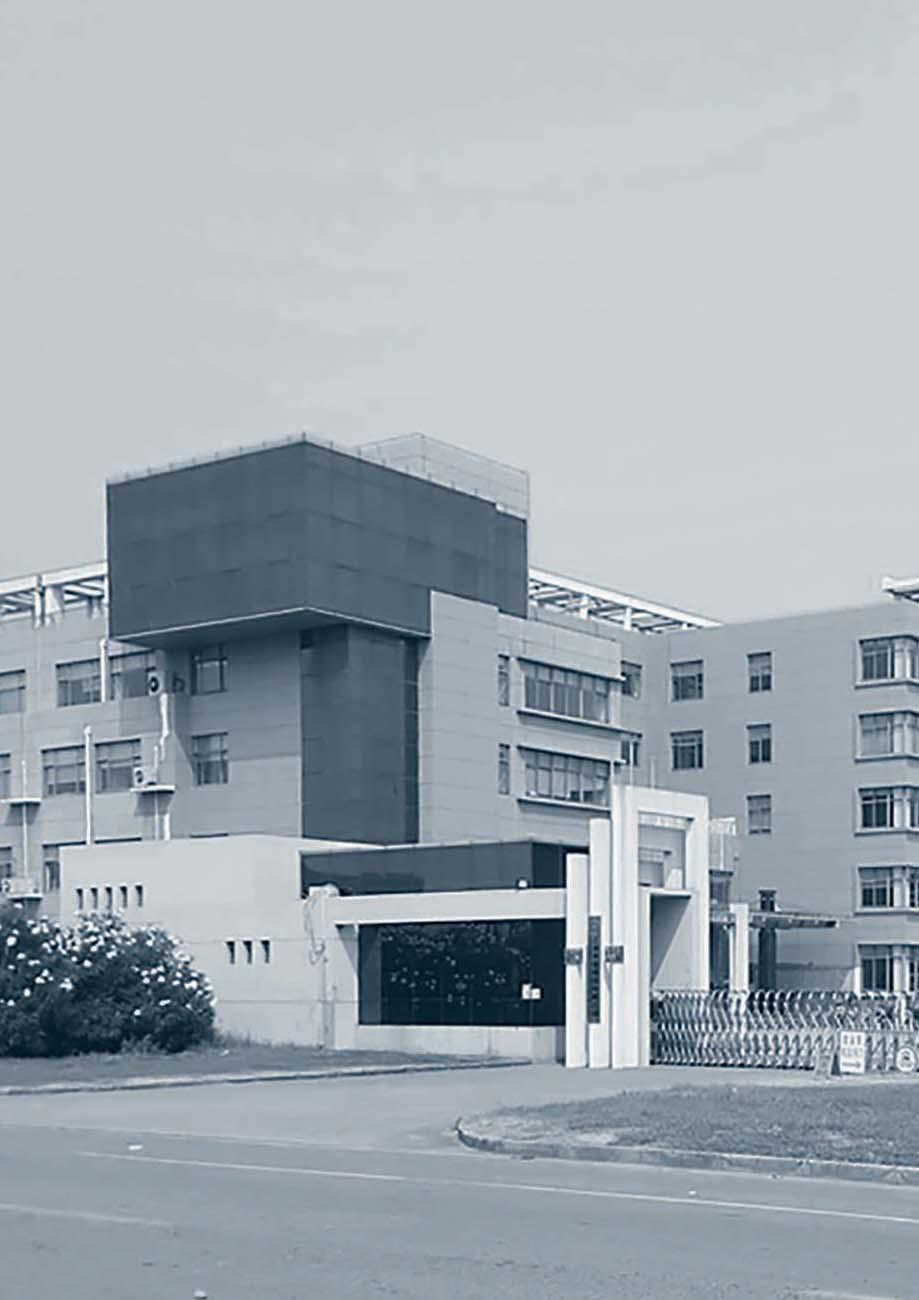
7 minute read
Marabu Asia
MARABU IN THE MIDDLE KINGDOM
China is Germany’s leading trade partner, ahead growth for German business. China will continue to extend its trade relationships and seek to exert
Marabu was very quick to recognise the opportunities offered by the Far East, and has been present in the Chinese market for almost 30 years, with a broad portfolio of printing inks. Through our long-established business partnerships, the Marabu brand has become very well known in China and has a very good reputation. Leveraging able to take advantage of China’s economic success story, doubling sales between 2017 and 2020. The Asian subsidiary is on the road to success was the acquisition of Iconinks Limited, Hong Kong, with sites in mainland China, in spring 2021. In Hong Kong, ten workers produce a waterbased ink for printing upmarket sports and work clothes for the Asian market. In China, inks are made for a variety of applications, including identifying shipment containers, and are sold to domestic customers.
In order to be responsive to customer needs, subsidiary was established in 2010 in Kunshan, 60 km west of Shanghai. However, it quickly became clear that this location was too small, and in early 2017 we found a suitable site in Fengxian, to the south of Shanghai – for which we also had the corresponding licenses required the land, making it necessary to relocate within

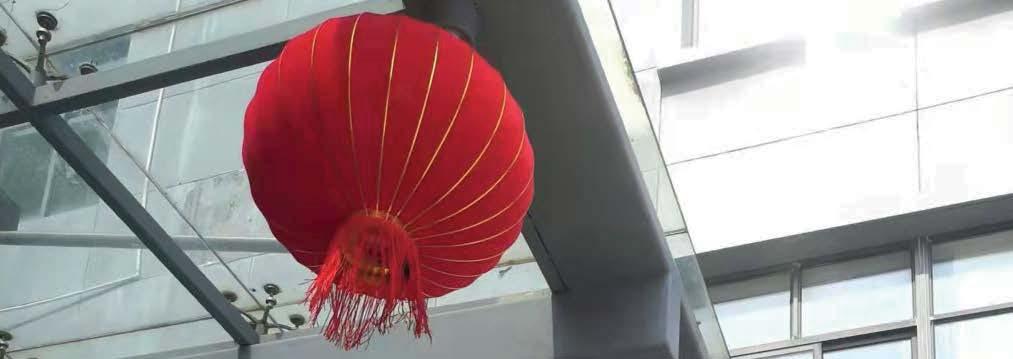
LOCAL MANUFACTURING MEANS LOWER ECOLOGICAL IMPACT
With the success on the Asian market, the desire for local production in China arose in order to be able to respond better to customer requests and to be able to guarantee the ability to deliver.
With local production, there is no need for transport by ship from Germany to Shanghai, which would take at least 30 days. Moreover, local terms of planning and can meet special require made in Fengxian every month, primarily based on Icon Inks formulas, plus other Marabu inks, sold under the “MAsia”-Label. These operations make use of local raw materials, transported short distances, and without reliance on air freight from Germany when there are bottlenecks.
In retrospect, this was a good and expedient decision, since the risk is being spread, especially with regard to the challenging raw materials situation on the German market . In 2019, 100% of all products were imported; in 2021 only 25%. This has also lowered CO2 emissions, due to the shorter distances involved and the elimination of air freight.
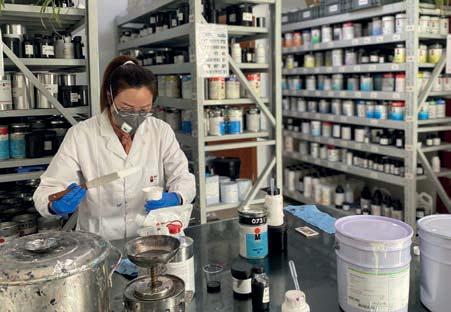

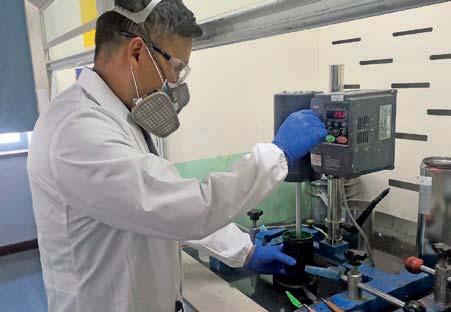
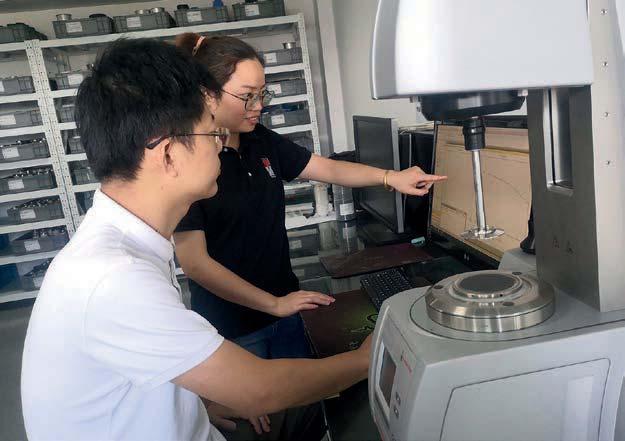
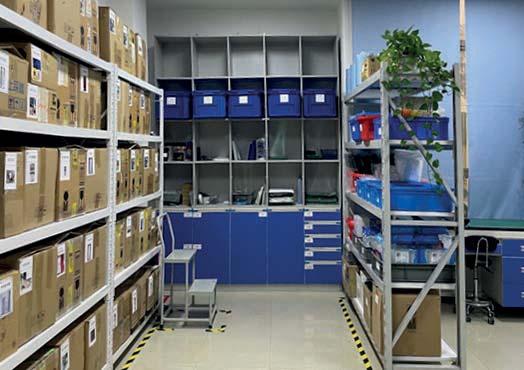
NEW PACKAGING FOR THE ASIAN MARKET
With the commencement of local manufacturing, the product management team reviewed the suitability of the existing packaging for screen and pad printing inks. Instead of using exclusively metal cans, it was decided to package MAsia label products in plastic pouches that are far lighter in weight. This meant a saving in material of 70% compared with the original metal. The pouches are robust, do not allow odours to
to 10 cm with the metal can. This sharply reduces known as summer smog. Depending on the exact composition of the ink, the smaller opening substances, helping to safeguard the health of customers.
Ink in pouches: In contrast to the widely used k i metal can, the ink cannot be stirred before use, but eta the ink must also be mixed in an extra container. On the plus side, the ink can be easily measured by pouring. Though leftover ink cannot be used and must be thrown away. The stability of partially emptied bags in storage is also an issue. After use, the empty pouches are simply disposed of via general waste collection, which in China. In Shanghai, one of the largest and most advanced incineration plants in the country was commissioned in 2019. It has an annual capacity of 3 million tonnes and generates 900 GWh of electricity. In rural areas, refuse the gas that is produced by decomposition (cf. gtai.de 2022).
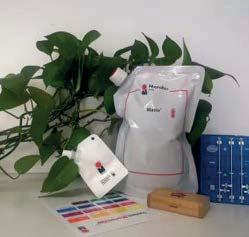
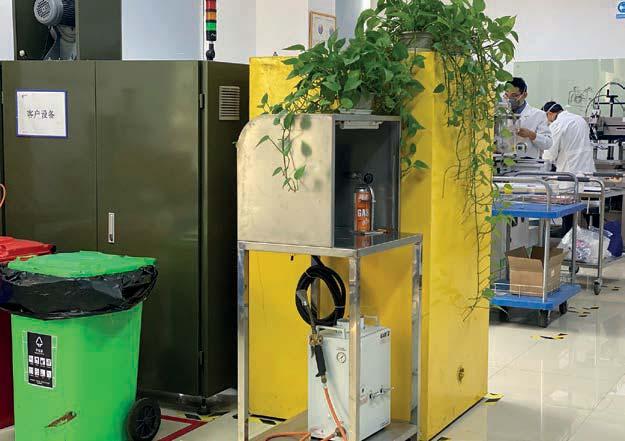

WASTE COLLECTION BY TYPE AND THE 0 PAPER STRATEGY
At Marabu Asia, waste ink and batteries (both collected separately and sent to disposal. All reclaimable materials, such as glass and plastic bottles, paper, cardboard and metals, are collected in dedicated containers, and taken away by recycling companies. In order to conserve resources even more and reduce waste, crockery is provided in-house to counteract the high volume of disposable food packaging. This is exemplary, because in the metropolis of Shanghai alone,with food packaging waste accumulates every day – a huge amount of rubbish!
China’s current 5-year plan for the period 2021 to 2025 proposes “Green Development”, with peak carbon emissions in 2030, and carbon neutrality by 2060. China is already a world leader in the generation and use of renewable energy and will continue to expand its capabilities in this area. However, at the same time the plants – that are apparently urgently needed – until at least 2026, and then be replaced by regenerative technologies. To sequester more carbon, China intends to increase its forestland from currently 22% of its total area to more than 24%. In view of the current shortage of wood, and therefore paper, Marabu ASIA has found the right answer: its 0 Paper strategy. All internal documents and external customer information, such as to be provided and published digitally. It is intended to fully implement the 0 Paper strategy key contribution to resource conservation.
Middle Kingdom?
Originally, the expression Middle Kingdom was plural, and described the geographic location of a number of small principalities on the Yellow River that formed the core of what is now China. Over the course of several centuries, further states were established around this core. These were united in 221 BC by ruler Qin Shi Huang (259 Qin”. As a result, the “countries in the middle” became the Middle Kingdom. Following a very chequered history, with cultural highlights but also painful military defeats, China has, in recent decades, found renewed strength and will displace This goes hand in hand with a new understanding of its economic and political leadership position in the world. As a result, the originally geographical Middle Kingdom is taking on a new role in the 21st century (cf. bpb.de 2022).
In order to achieve the 1.5 degree target of the Paris Agreement, CO2 companies must measure their carbon footprint and create a report industries and companies to present their CO2 emissions along the supply chain in a comparable manner and ultimately also to show the improvements. The greenhouse gas (GHG) protocol was drafted back divides emissions into 3 scopes: Scope 1, 2 and 3.
Scope 1 includes all direct emissions arising from the activities of an organisation or its subsidiaries (emission sources: heat, cooling and steam generation, the company‘s vehicles and air conditioning leaks); Scope 2 includes the indirect emissions from electricity, heat and steam that companies buy from utilities; Scope 3 includes the other indirect emissions in the supply chain (activities along the value chain - both upstream at suppliers and
Photo credits
Cover photo P. 6, 23, 35, 45, 51, 57, 62 Chart gas consumption P. 24, 36, 52 Paper usage chart Chart Waste Amount P. 27, 39, 47, 53, 64 Diagram Scope P. 26, 37 P. 39 Global Commitment Marabu – Germany Marabu – Germany P. 29 Marabu – Asia P. 71 allversum.com (2019): Wie Schweden aus Müll Millionen macht –
bdi.eu (2021: Brasilien: Wichtigster Wirtschafts
bpb.de (2010): „Großartiges Reich der Mitte“: Zur Aktualität
bvse.de (2018): Bundesverband Sekundärrohstoffe und Entsorgung.
IndeX2021: Die wichtigsten Ergebnisse. Stand: 2021
Deutsch- Brasilianische Industrie und Handelskammer von Rio de Janeiro (2020): Brasilien Abfall- und Recyclingwirtschaft. Zielmarktana
2-Fußabdruck
gtai.de (2019):
statista.com (2020), a: Ranking der 20 Länder mit dem größten
statista.com (2020), b: CO2-Emissionen: Größte Länder nach Anteil
Stand 14.07.2021
CDP Ranking 2020: 19 deutsche
Aus Wäldern wird Papier. WWF 2021
Marabu GmbH & Co. KG 71732 Tamm · Germany Phone: +49 7141 691 0 info@marabu.com www.marabu.com






